




If you are approaching retirement or are already there, you may be considering downsizing your home. It’s a big decision, with ramifications for both your finances and your lifestyle. As you think about downsizing, here are some things to keep in mind:
retirement?
Decide if a move makes sense. You can expect your needs and priorities to shift in retirement. Perhaps you won’t require as much square footage as you did when raising children, or you may find it challenging to keep up with home maintenance like you used to.
It may be financially prudent and personally necessary to get out from under the costs and responsibilities of maintaining a larger property. Your location preference may shift, too. It is common for retirees to desire living closer to family members or in warmer climates.
Create a timeline for your move. Discuss the pros and cons of selling your family home now or in the future. External market factors can affect your next step. Timing the sale of your home and the purchase of a new one can be tricky. Be prepared in the event your home doesn’t sell quickly.


























Electronic Gadgets
Everywhere people turns these days, we find useful and sometimes not so useful electronic gadgets that someone thought would make our lives easier. Some of these, such as electronic dog collars, are helpful to hunters. A person can put a collar that has a small transmitter on their dog and keep track of where their hunter is hunting in the dark of the night. My grandson has one he uses while hunting raccoons. A coon hound will frequently track off two or three hundred yards into the brush and darkness while on a scent. The electronic collar will transmit a signal in real time to Zane’s phone, telling exactly where the
dog is located. In addition to being able to locate one’s dog, the collar will transmit distance travelled, if the dog is standing still, sleeping, and the quality of the dog’s sleep. It will also total the distance traveled per day and can be compared to other dogs, either in the area or in a friends group. My older son, Walter, lives in suburban Houston, Texas. He has a standard poodle, Hank, that takes him on walks each day. Walter got Hank one of these colors, mostly to keep track of how many miles they walk each day but also to compete with Zane and his coon hound to see who gets the most steps in each day. For Christmas, Zane bought me one of these collars so I can enter in the exercise competition. So far, our dog, Billie, is the leader in the couch potato category. He manages several hours per day of quality sleep time. While in Houston over Thanksgiving, Walter was having trouble pairing his electronic thermometer for his grill with his phone. Having

(Financial cont’d on pg 2)
real estate professional can help you determine what needs to be done before putting your house up for sale. Your home may need repairs to meet code or maximize its list price. Get an appraisal of current market value and decide what you’ll be comfortable spending on a new, smaller home.
Review your housing options. Once you decide to downsize, you can start looking for a new place that meets your needs and budget. If you’re considering a condo or townhome (two popular options for retirees) make sure to factor in any fees or assessments that are charged to residents when calculating the overall cost of ownership. If you’re in need of assisted living services, you’ll also want to get a handle on those costs – and whether they can be offset by any long-term care insurance you may have – so you can plan accordingly. In terms of location, you may want to think about the proximity of amenities and services including grocery stores, transportation and your doctor’s office.
Be prepared for a multigen conversation. A change as impactful as selling your home may prompt conversations with family members on the topic of your estate. Downsizing usually requires whittling down the personal possessions you’ve acquired over the years. If you’re moving to
the same app on my phone, I connected to his grill and no problems were incurred while he cooked. I thought no more about it until Christmas Day when my phone told me, my prime rib roast was on the grill. This came as a surprise to me since my grill was not even turned on. I thought no more about it until a few hours later, my phone alerted me that my prime rib was almost done. The mystery continued until Walter called to wish us a Merry Christmas. He mentioned they were having prime rib that evening. It only then occurred to me, I was monitoring his dinner from a thousand miles away.
Some of the electronics we use in our day to day lives are rather handy. My side-by-side will send a text message to me when it is low on gas. The dog collars will tell us where the dogs are so they do not get lost. Other things are just silly. I have no need to know when Walter’s dinner is ready unless I happen to be there to help him eat it.

a residence with managed maintenance, you won’t need the lawn mower, snowblower, or other tools in your garage. That extra set of dishes might be more useful to someone else. If you’re thinking of giving items to family members, be prepared for the possibility of different generations having different interests and attachments to your home and belongings. It can be a good idea to establish how you want to explain to family members your lifestyle goals for retirement, so they can support you through the process.
Review your finances carefully. Take the time to thoroughly review the financial implications of your specific situation. Just because you are downsizing does not necessarily mean you will suddenly have a cash windfall or establish enormous savings. Remember that HOA expenses, lifestyle changes and upgrades in construction quality can add to costs. Additionally, if you choose to move to a retirement

JANUARY Specialty Schedule
CLOSED JANUARY 1
Catherine Durflinger, ARNP | Allergy Monday-Thursday, Each Week
Dr. Homedan/Bradley Hill PA-C | Orthopedics January 8, 15, and 22
Dr. Pitt | General Surgery January 6, 9, 20, and 23
Dr. Whitman | ENT January 3, 17 and 24
area that has more built-in services, it can increase your cost of living, as well. Taking the time to explore the intricacies of your situation can prepare you for the next steps. And remember: you don’t have to do it alone. A qualified financial advisor can help you navigate this complex process with confidence.
Duane J Lusson, CFP, ChFC, CLU, MSFS, is a Private Wealth Advisor with Ameriprise Financial Services, Inc. in Ottumwa, Iowa. He specializes in fee-based financial planning and asset management strategies and has been in practice for 33 years. To contact him, call 641-684-4200 or stop by his office at 527 W. Second in Ottumwa, Iowa.
Investment products are not insured by the FDIC, NCUA or any federal agency, are not deposits or obligations of, or guaranteed by any financial institution, and involve investment risks including possible loss of principal and fluctuation in value.
Investment advisory products and services are made available through Ameriprise Financial Services, LLC, a registered investment adviser.
Securities offered by Ameriprise Financial Services, LLC. Member FINRA and SIPC.
© 2024 Ameriprise Financial, Inc. All rights reserved. File # 6472908.1

Matthew Bednarchik, CRNA | Pain Clinic January 6 and 21
Dr. Ciesemier | Allergy January 10 and 24







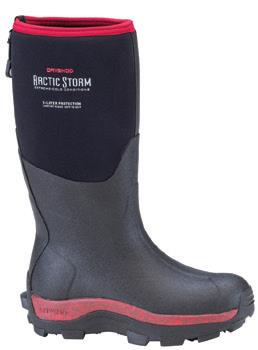
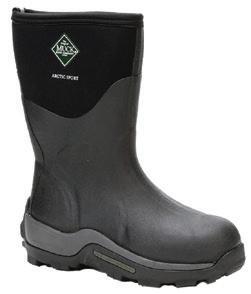


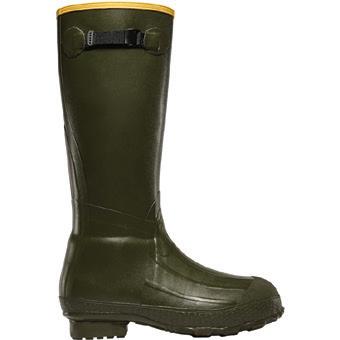





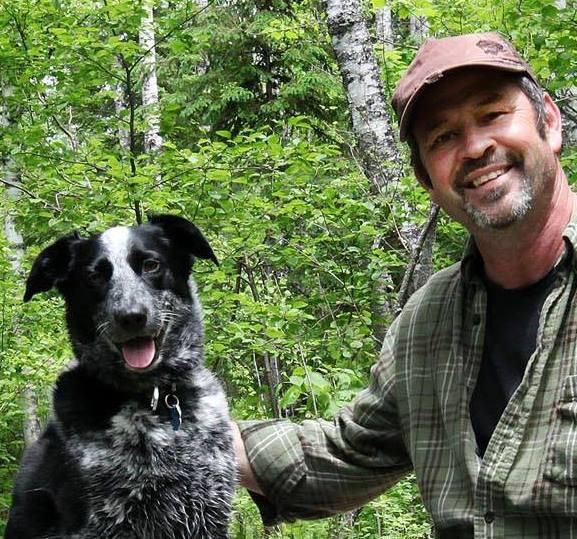
Experienced
When hiring a carpenter, or contractor, you need to determine their qualifications; how much experience do they have; that’s important. Over the years, I’ve learned to ask if theirs was good, or bad experience; that’s more important.
I once had two workers replacing the roof on a rental house of mine. Both men were about five years older than me. Jesse was a drywall finisher by trade, and one of the best I’d ever met.
The first time I met Jesse, I asked how long he’d been finishing drywall. “I don’t know,” Jesse replied.
“I didn’t want to work at the hog plant, so I worked summers with my uncle finishing drywall when I was in high school.” He thought for a moment, “I suppose twenty years or so, but some days it seems like 100 years.”
We shared a good laugh about that. A few years later, Jesse asked if he could give me a quote to replace a roof on a rental property of mine.
“I thought you were a dry-


wall man,” I said. Jesse explained that he was teaching his partner, Paul, to finish drywall, and Paul was teaching Jesse how to lay shingles. I agreed to consider Jesse’s bid, and meet Paul.
“How long have you been roofing,” I asked Paul.
“About 35 years,” Paul replied. His answer sent up red flags for me because I already knew his age.
I questioned him, “so, you were laying shingles when you were five or six years old?” I could tell my inquiry offended Paul. I didn’t outright call him a liar, but clearly insinuated he was full of bologna.
Paul went on to boast his vast experiences as a roofer, telling me how good he was, and then concluded, “…so don’t tell me how to roof!”
“I’m not telling you how to roof,” I replied, “just verifying how long you’ve been in the business.” From that moment on there was no love lost between Paul and me. Because of the bad chemistry between us I should not have hired the pair, but I liked Jesse and I knew his work ethic.


I wanted to help Jesse out, so I hired them anyway.
Paul showed up wearing cowboy boots on the morning they started the roof. “Did you bring other shoes,” I asked. He said that he did not, and inquired why I was asking. “I’ve never seen anyone work on a roof, while wearing cowboy boots. I would think the leather soles would be slippery up there.”
Paul snarled, “Don’t tell me how to roof.”
Paul and Jesse stripped the entire roof. Late in the afternoon, Wormhoudt Lumber arrived with a straight truck full of materials. The driver said, “We’ll need to unload the truck by hand,” pointing upward. “There’s a low powerline overhead the forklift won’t clear.” Paul argued the lift would clear the lines and offered to operate the fork truck. “I’m not willing to risk it, and you’re not allowed to run the lift,” the driver said as he handed Paul an empty pallet from the truck. “Set this over there to stack the shingles; we’ll unload them first.” But Paul said he wanted the decking first, and then the shingles.
“I’m no roofer,” I said, “but wouldn’t it be better to unload the shingles first, and then the decking.” Paul wanted to know my reasoning. “Because the decking will go up first and you’ll have to maneuver every sheet of OSB around the pile of shingles to get on the roof.”
“You’re right,” Paul said, then leaned toward me. “You’re not a roofer, so don’t tell me how to do my job!” Jesse and the driver both rolled their eyes, as they began unloading the truck Paul’s way. With the materials now on the job site, they would start early the next morning.
The next morning, I again questioned Paul’s choice of footwear. “I’ve been




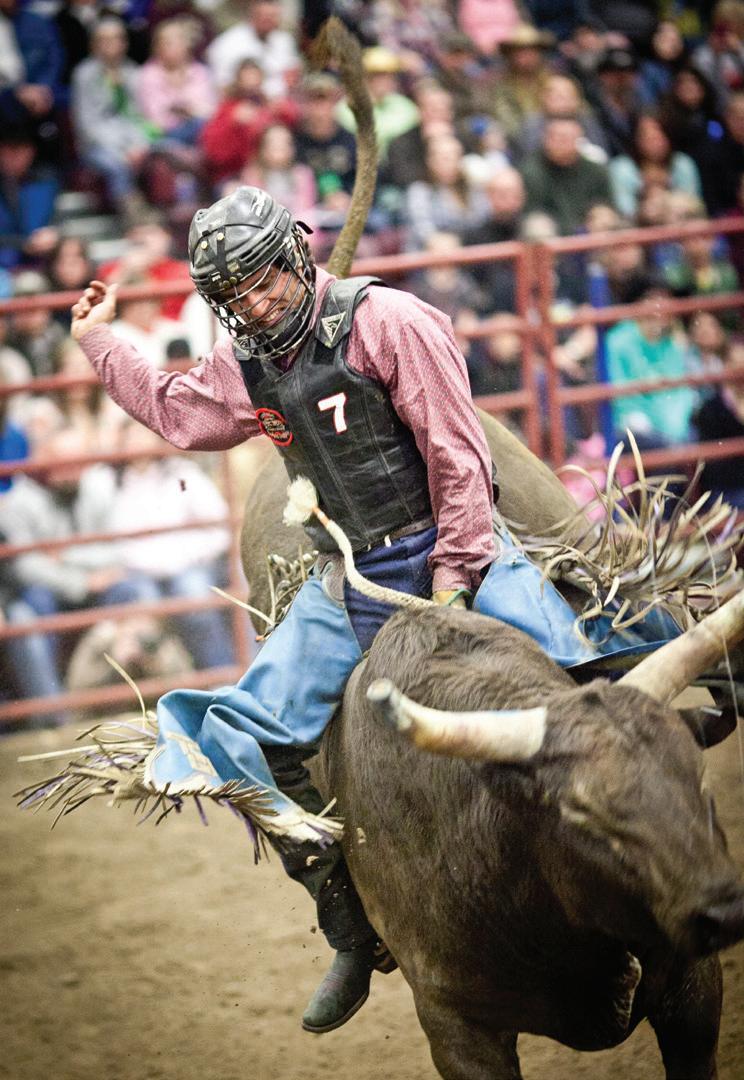






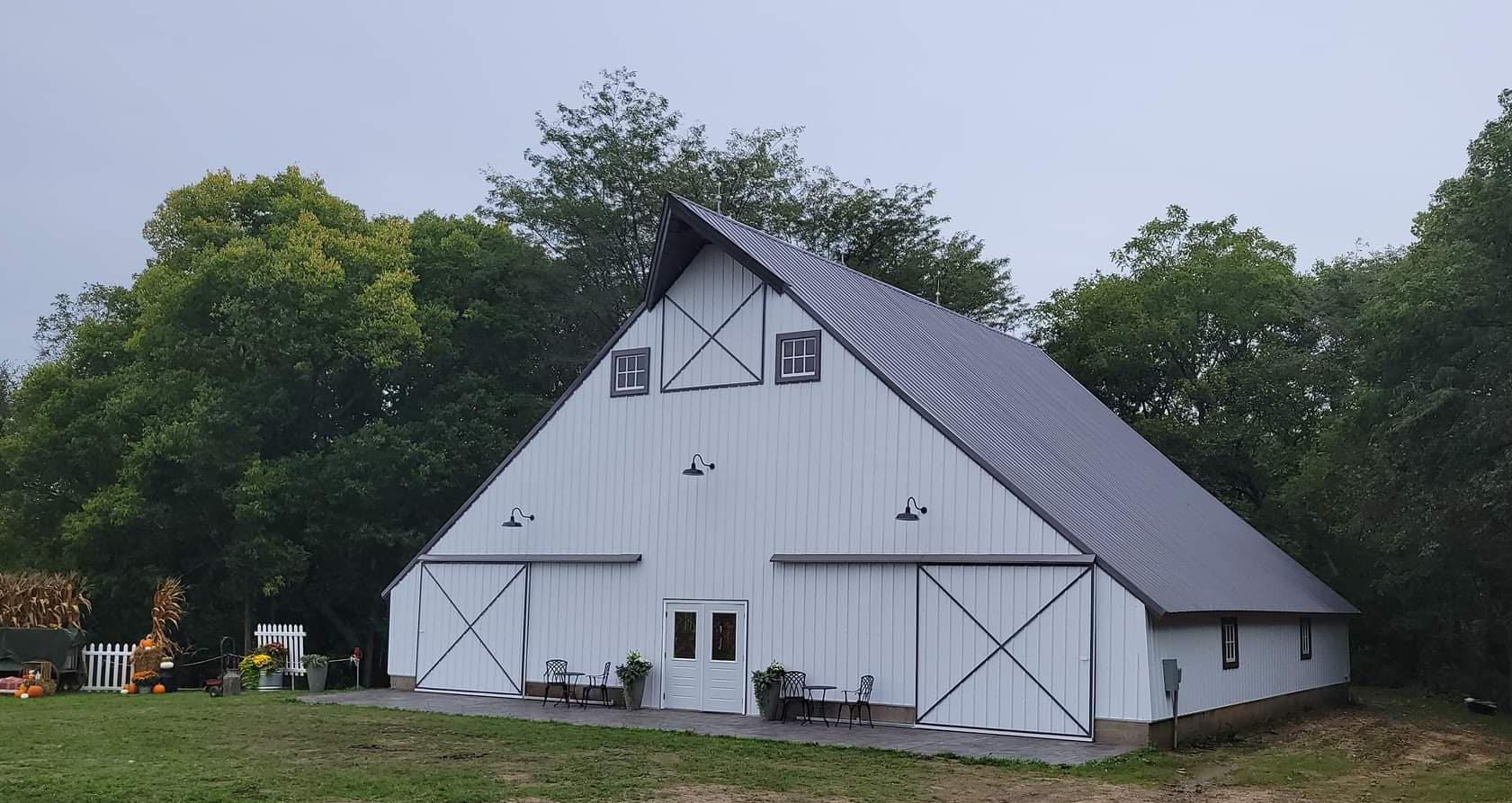
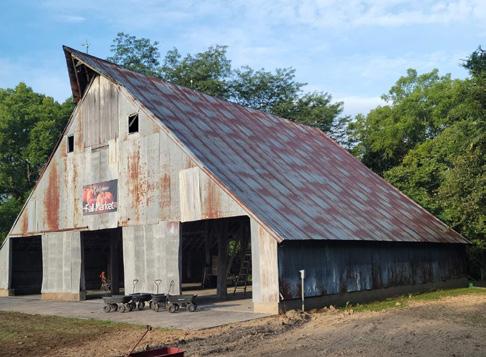


(Just the Other Day cont’d from pg 3)
roofing, in cowboy boots, for 35 years, and never had a problem, so don’t tell me how to roof.” I’m sure Paul was becoming just as tired of me as I was of him. Still, I couldn’t resist a smart aleck comeback.
“Did they make cowboy boots for five-year-old’s back then?” Jesse and I laughed, Paul snarled as he picked up the first sheet of OSB and started toward the ladder. Paul stumbled and drop the 4X8’ sheet of decking as he ran into the stack of shingles behind him. I just shook my head.
I watched as the two carried several more sheets of decking up the ladder and onto the roof, each time awkwardly moving around the pallet of shingles. Finally, Jesse moved the ladder to a different part of the roof. Paul questioned why. “I’m tired of banging my knees on the stupid shingles. It hurts,” Jesse said. “We should have unloaded the shingles first.” I kept quiet.
I did question Paul if they were mounting the OSB with the wrong side up. “Don’t tell me how to lay a roof,” he said. By the end of the day, they had all the decking laid.
I called Popeye, at Wormhoudt Lumber. I told him they laid the OSB smooth side up. Popeye laughed, “What did you do, hire a plumber to put a roof on your house?” We had a good laugh about that. Popeye said it didn’t really matter which side was up. “It isn’t going to hurt the roof; as long as they don’t fall off. The rough side gives them a lot better traction.”
The next morning, Jesse and Paul installed the drip guard, and then unrolled and fastened the felt on the front half of the roof. The roof had two levels; the front of the house
was two stories with a single story across the back of the house. Both levels were a steep pitch and Paul was wearing his usual cowboy boots. As he started up the ladder carrying two bundles of shingles, I said, “I’d feel better if you carried those one at a time.”
Paul looked over his shoulder, “And I’d feel better if you’d stopping trying to tell me how to roof a house.” Jesse followed Paul up the ladder with one bundle of shingles.
Paul picked up two more bundles of shingles. He looked at me saying, “I don’t want to hear it,” and started climbing the ladder. As he neared the roof’s peak in his cowboy boots with slick leather soles, he slipped.
Paul fell forward, dropping both bundles. The bundles of shingles teetered on the peak. “Oh shoot,” he screamed as he started falling down the roof, unable to regain his footing. He desperately tried to grip the roof with his hands or feet, but the smooth soles of his cowboy boots, would not grip the smooth surface. My jaw dropped as I watched helplessly from the yard. There was nothing I could do.
I thought the chimney would stop him from falling to the lower roof, but he was veering to the left. Maybe Paul would catch the ladder to the left of the chimney, on the lower roof, to stop his fall. But he nearly got back on his feet, then stumbled and fell to the right, tumbling onto the lower roof top. Paul continued to roll down the steep pitch, and then finally, over the roof’s edge. Fortunately, the edge of the roof is only about seven feet above the ground, and there was a three-foot-tall stack of shingles below.
Just as Paul landed flat on his back on top of the

shingles, the two bundles near the peak dislodged, and started sliding down the slope. I prayed they would get caught on the chimney. The first bundle lightly snagged the edge of the brick chimney, which stopped it. But then the second bundle crashed into it, knocking it loose. Like pucks on a shuffleboard, both bundles were in motion again. They jumped to the lower roof and were now headed toward Paul.
The first bundle slid off the roof barely clearing Paul. It hit the edge of the bundle pile, and then slammed flat onto his chest. It sounded like a locomotive releasing steam as the weight forced the air from Paul’s lungs. The second bundle didn’t have as much momentum; the corner of the bundle landed on the first bundle, right over the center of Paul’s chest. There was no doubt, the first bundle landing flat, kept the pointed corner of the second bundle from crushing Paul’s chest, and probably killing him. Everything was happening so fast, and yet seemed to be in slow motion. The situation was surreal.
Somehow, I was running down the yard toward Paul. Jesse appeared out of nowhere; I didn’t even see him come off the roof. Paul was motionless, making no effort to move the bundles, and I was worried. Jesse and I each lifted a bundle from Paul’s chest. I called his name. “Paul? Paul?” His eyes were open and moving, but he didn’t answer. He looked terrified! Suddenly, Paul took several desperately deep breaths, gasping for air.
“Paul,” Jesse said. “Paul, are you okay, man?” I said I was going to call an ambulance. Finally, Paul spoke.
“No,” Paul snapped, still gasping for air. “No am… no am…no ambu…lance. No.” I repeated that I should call an ambulance. “No,” Paul yelled. “I…I’m okay.”
“Paul, you could have broken ribs, or internal injuries,” I said, but he insisted there would be no ambulance. He was still lying on the shingles, and asked for help standing up. “I don’t want to move you in case you’re hurt,” I said.
Jesse extended a hand to Paul. Then said to me, “Look man, he said he doesn’t want an ambulance. Leave him alone.” I was thinking there could be a liability for me.
By now twenty minutes had passed and Paul was up and walking around. “Okay, no ambulance,” I said. “At least let me take you to the ER and have them check you out.”
“Give it a rest,” Paul snapped. “You’re not going to tell me how to roof, and you’re sure as heck not going to tell me what to do.” Then he picked

up a bundle of shingles, turning to the ladder. I was becoming agitated with Paul, and pulled the bundle from his shoulder.
“Good enough,” I said. “I’m not going to tell you what to do, or how to roof. But I am going to tell you how to dress, and you are not going back on my roof until you get rid of the cowboy boots. You need rubber soled shoes.” Paul left for the day, and Jesse continued laying shingles.
Paul came to work the following morning with brand new rubber soled work boots. I watched Jesse and Paul finish the roof. There was no doubt in my mind, Jesse was the better roofer; Paul was just a front man who blew a lot of smoke.
A couple of years after they finished my roof, I ran into Jesse at a convenience store. We chatted for a bit and I asked Jesse if he wanted to give me a price on another roof. “No way, man,” he said. “I’m not doing roofing anymore. I asked him why, telling him was good at it.
“Do you remember when Paul fell off your roof,” Jesse asked. How could I forget. “Well, that scared the crap out of me. I thought he was dead, Tom.” I perfectly understood what Jesse was saying. “When we finished your roof, Paul returned the boots to Walmart; he said they didn’t fit right. “Well, we did a couple more smaller roofs after that. Then we started another steep roof like yours, and Paul was wearing his cowboy boots again. Anyway, he slipped on the roof and dropped a full sheet of OSB. The decking came sliding right at me and knocked me down like a bowling ball. I fell on top of the OSB and was sliding down the roof like a saucer sled going down that hill at Wildwood Park. I thought I was a goner, until the OSB hit a vent pipe. I grabbed the
vent and the OSB went over the edge. It scared me to death. Tom, I ain’t never fell off a roof while finishing walls. I ain’t been on a roof since then.”
I asked Jesse, “Why was Paul was so adamant about not having an ambulance come that day? He could have been seriously injured.”
“He probably should have been dead,” Jesse said. “But you ever seen an ambulance go anywhere without a cop showing up? Paul didn’t like cops too much.” Jesse continued, “Paul didn’t have no thirty years roofing, but he talked a good line and could get roofing jobs. Most of Paul’s experience was doing stuff that kept him running from the cops.”
I asked Jesse, if he was still working with Paul. “Nope, I ain’t seen him in over a year. Last I heard he was back in prison.”
“Wow. So, Paul’s was not good experience,” I said.
“Yeah, to say the least,” Jesse said. “He was a talker just like you, but Paul wasn’t very honest.” We shared a good laugh about that. I admitted I never trusted Paul, and only hired him to help Jesse out. We said our farewells and went our separate ways.
I’ve run into numerous bad carpenters and so-called “experienced craftsmen” since then, but I think I’ve become better at spotting them. The scammers are the ones who talk up a storm about how good they are, and how much experience they have. It’s up to you to determine if the experience was good, or bad.
Don’t get me wrong, there are a lot of good carpenters out there, but there are also a lot of con-men, and both are usually very experienced at what they do.
